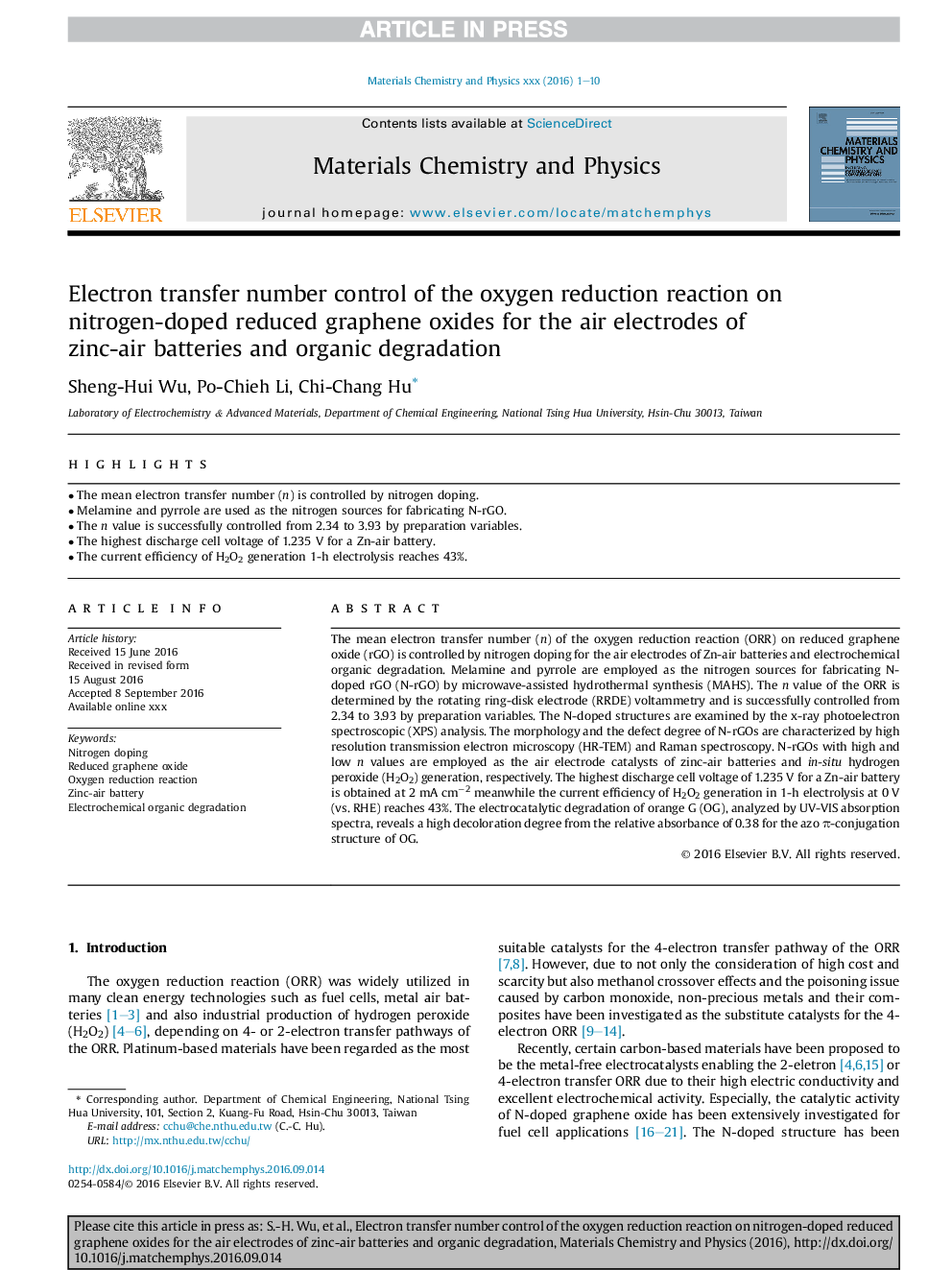| Article ID | Journal | Published Year | Pages | File Type |
|---|---|---|---|---|
| 5448605 | Materials Chemistry and Physics | 2016 | 10 Pages |
Abstract
The mean electron transfer number (n) of the oxygen reduction reaction (ORR) on reduced graphene oxide (rGO) is controlled by nitrogen doping for the air electrodes of Zn-air batteries and electrochemical organic degradation. Melamine and pyrrole are employed as the nitrogen sources for fabricating N-doped rGO (N-rGO) by microwave-assisted hydrothermal synthesis (MAHS). The n value of the ORR is determined by the rotating ring-disk electrode (RRDE) voltammetry and is successfully controlled from 2.34 to 3.93 by preparation variables. The N-doped structures are examined by the x-ray photoelectron spectroscopic (XPS) analysis. The morphology and the defect degree of N-rGOs are characterized by high resolution transmission electron microscopy (HR-TEM) and Raman spectroscopy. N-rGOs with high and low n values are employed as the air electrode catalysts of zinc-air batteries and in-situ hydrogen peroxide (H2O2) generation, respectively. The highest discharge cell voltage of 1.235Â V for a Zn-air battery is obtained at 2Â mAÂ cmâ2 meanwhile the current efficiency of H2O2 generation in 1-h electrolysis at 0Â V (vs. RHE) reaches 43%. The electrocatalytic degradation of orange G (OG), analyzed by UV-VIS absorption spectra, reveals a high decoloration degree from the relative absorbance of 0.38 for the azo Ï-conjugation structure of OG.
Related Topics
Physical Sciences and Engineering
Materials Science
Electronic, Optical and Magnetic Materials
Authors
Sheng-Hui Wu, Po-Chieh Li, Chi-Chang Hu,
